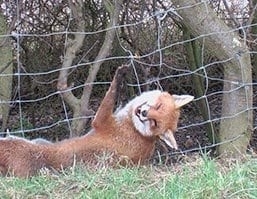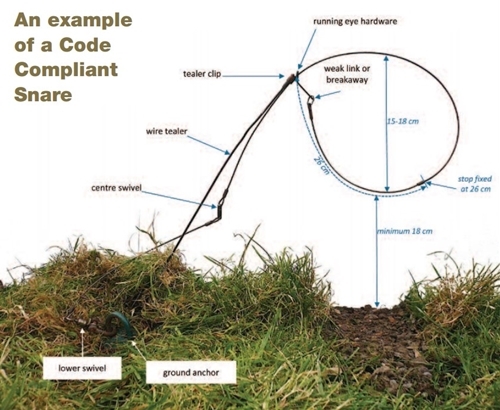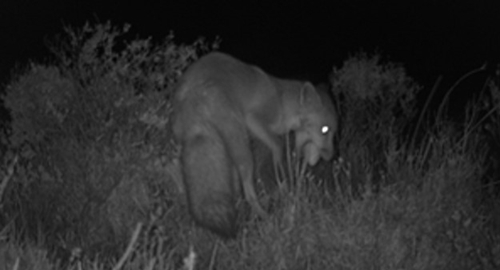3 Minute Read
By Henrietta Appleton, GWCT Policy Officer (England)
The use of snares to control foxes is a contentious issue. Animal lovers when confronted with images such as that below (source: National Anti Snaring Campaign (NASC) will quite rightly feel that it is an unsustainable practice and call for the banning of its use. As a result the Petitions Committee debated "Make the use of free-running snares illegal for trapping wildlife" (you can watch it here) on 9th January. The GWCT briefed Nick Fletcher MP who led the debate as well as other MPs who were involved.

However (as NASC rightly points out) in this case it is not the fault of the snare hardware but of the snare operator as setting snares on fences is contrary to the code of practice and therefore the operator could be prosecuted. It is difficult to tell from this image but other images posted of animals strangled in snares appear to have been caught by self-locking snares – which are illegal. But the image remains – snares are inhumane, lethal and barbaric.
However in recognition of the value that fox management has to wildlife conservation, wildlife biology and game management the GWCT has been instrumental in researching how the hardware of a snare can be improved to address animal welfare concerns. The resulting design (see picture below) was published for manufacturers to follow and the essential elements of the hardware encompassed in Defra’s Code of Practice.
Research by Defra showed that when the code compliant snare or humane cable restraint was deployed in accordance with best practice the Agreement on International Humane Trapping Standard welfare standard for a live-capture device was surpassed. This research also revealed that non-code compliant snares fail this standard.

This result emphasises that the modern snare or humane cable restraint is a holding device; not a killing device which is a common misconception. Key elements of its construction ensure that the target species is restrained in a manner that minimises injury until either a radio-tag is applied by a licensed wildlife biologist and it is released or it is humanely despatched for conservation or game management purposes. For more information see here .
In addition as mentioned above the location of a snare also has a bearing on its humaneness. Obviously, they need to be set in locations likely to be occupied by foxes which will reflect the operator’s knowledge of fox behaviour. But the location should also reflect guidance and training that ensures that its positioning is unlikely to catch a non-target species and that captives are free from risk of entanglement (with trees, fences, shrubs), which is known to result in poor welfare outcomes.

But what is the importance of ensuring we retain this method of predation management?
In simple terms it is a uniquely effective tool in the management of foxes which is vital if Government wishes to achieve the species recovery targets it has set itself - such as in the conservation of ground-nesting species like the Curlew. Nest camera data from our New Forest research has shown yet again that foxes have been the main nest predator (see picture).
Given the improvement in animal welfare that has been demonstrated through the research-led design of the humane cable restraint and the adoption of good operating practices through training, we believe that Government needs to display restraint against the calls for a ban in order to achieve its conservation targets.
Watch this video to learn more: